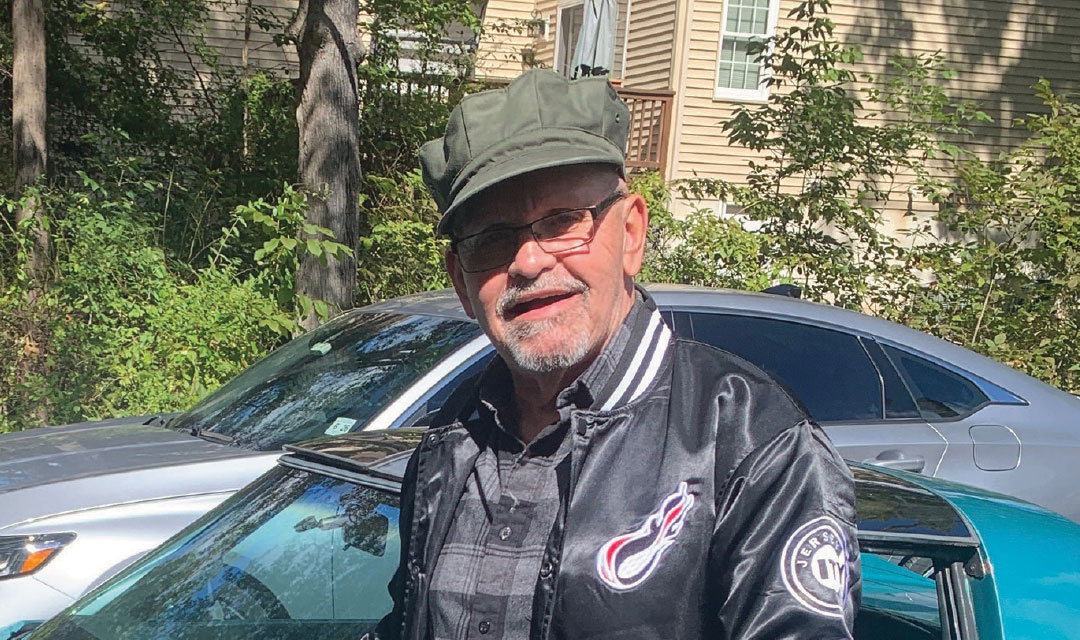“I was in Atlantic City a while ago and I walked two miles!”

Robert Martinez, a Jersey City retiree in his mid-60s, noticed that whenever he walked, he would get pain in his left leg. His symptoms continued to worsen until he was unable to walk any measurable distance without having to stop because of the pain. He had complained about the pain to an endocrinologist he’d been seeing for management of his diabetes.
“I told her I was getting a lot of pain in my left calf, and it happened whenever I tried to walk,” Robert, now 68, recalls. “It was she who referred me to Dr. Huang at Jersey City Medical Center [JCMC].”
The Diagnosis
Vascular surgeon Joe Huang, MD, remembers how difficult it was for Robert to walk. He did an examination and diagnosed Robert with peripheral arterial disease (PAD), a life- and limb-threatening condition in which narrowed arteries reduce blood flow to the legs or arms, though most often the legs.
“Robert’s symptoms were very consistent with PAD,” says Dr. Huang. “Typically, people with this disease have claudication, which is pain in the legs when walking. Robert had severe, lifestyle-limiting claudication to the point that he could only walk a few feet. This was due to atherosclerosis, a plaque buildup within the arteries of the leg that restricts blood flow to the lower parts of the leg.”
The Surgery
Dr. Huang performed a “partly open, partly endovascular” hybrid surgical procedure that included three components. The first was a remote endarterectomy, which, says Dr. Huang, involves “a special device to remove plaque from the artery in the groin down to the mid thigh. ” Dr. Huang then performed an angiogram, which uses CT imaging to show where and how the blood is flowing. Finally, stents were inserted to treat additional disease below the endarterectomy site.
“The extent of Robert’s disease required more than an angiogram, but did not require a bypass, which is a more invasive surgery,” says Dr. Huang. “In someone who has claudication, we don’t typically do a bypass because we can achieve the intended results with the hybrid procedure.”
In extreme situations, people who have PAD can have rest pain or develop gangrene, or tissue loss, in the legs. “Robert was not yet at that point,” explains Dr. Huang. While Dr. Huang says that Robert didn’t qualify for a bypass, he definitely needed a procedure to remove the plaque, relieve the pain and help him walk. “By doing the minimally invasive procedure, we preserved the option of a bypass in the event Robert does need it down the road,” says Dr. Huang.
Dr. Huang says that Robert has been “a very good patient and always comes in for his scheduled follow-ups.” Robert says that, in the beginning, he saw Dr. Huang for follow-up visits every six months. Now his follow-ups are once a year.
The JCMC Vascular Center
Dr. Huang notes that JCMC’s VascularCenter did not exist when he first saw Robert more than five years ago. Now, however, “When he sees us in our Vascular Center, it’s like a one-stop shop,” says Dr. Huang. “We have a vascular lab to do all the noninvasive studies necessary to determine what procedures he needs. They are often highly specialized tests. All the studies can be done at the Vascular Center; we can see the results and then come up with a treatment plan on the same day.”
In addition, JCMC now has a state-of- the-art hybrid operating room. “It’s the first one in Hudson County,” says Dr. Huang. “It allows us to expand our abilities to perform complex aortic aneurysm procedures and carotid procedures previously not possible at JCMC.”
Robert says he was very happy with both the medical treatment and the personal treatment he received, and continues to receive, from Dr. Huang and his staff. “Dr. Huang is very good and very nice,” says Robert. “He takes the time to explain everything clearly, whether it’s a medication, a procedure— anything I need to know. And his staff is great, too.”
A Happy Outcome
Today, Robert is feeling much better and is very mobile. “I stopped smoking before the procedure, because it was required,” he says. “And I haven’t smoked since. Dr. Huang advised me to walk, and I do walk a lot. I was in Atlantic City a while ago and I walked two miles!”
When Robert is not working part-time delivering Italian food (“It keeps me busy and walking,” he says), he spends time working on his new toy—a 1976 Corvette. “I just bought it,” he says. “I’ve always wanted one. I got it in the teal color, which is very rare.” Robert pauses and laughs. “I guess I’m having a midlife crisis,” he says.
Peripheral Arterial Disease: Risk FactorsFactors that can increase your risk of developing PAD include:
|
To learn more or to schedule an appointment with the Vascular Center, call 201-915-2448.